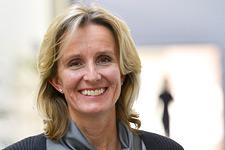Statoil: Disappointed, but with pride

Statoil has made fewer commercial discoveries than they had hoped for in the Barents Sea, but still takes pride in increased knowledge and data collected.
Irene Rummelhoff, senior vice president for exploration on the Norwegian continental shelf, is satisfied with the outcome of the season:
Not as hoped
- It has been argued that the exploration program has had limited success. Indeed, we have made fewer commercial discoveries than we had hoped for. However, there are a number of things that I take pride in. We have tested a great variety of geological plays in frontier areas and dramatically increased our knowledge with the huge amount of subsurface data we have collected. We have also demonstrated that we can operate in a safe and efficient manner in the remote parts of the Barents Sea.
Tree wells at Hoop
Statoil’s exploration program started with five wells near Johan Castberg. These wells were critical to clarify the oil potential in the area, in order to plan the development of the Johan Castberg field. The oil discovery in Drivis will be developed as a part of the Johan Castberg project.
The company also drilled three wells in the Hoop area during the summer as an effort to build knowledge of this huge frontier area of the Barents Sea. Statoil have confirmed a working petroleum system in Hoop, but need to work further to understand the findings.
Not without noise
The Hoop wells were the northernmost wells ever drilled on the NCS, over 300 kilometers from shore. These wells provided a lot of new learning when it comes to exploring remote northern areas and solving logistical and operational challenges related to it.
New experience
Statoil says they have built important experience through developing an ice management plan that will be important in the future, not least in the 23rd concession round.
“This is a marathon”
- Exploring in the Barents Sea is not a sprint, but a marathon. It is about long-term thinking, stamina and systematic building of knowledge. I see our 2013-2014 exploration program as an important building block for the future of Barents Sea exploration.
- Our focus next year will be to analyze the extensive data we have collected, interpret the 3D data from the joint seismic acquisition in the southeastern Barents Sea and decide on the way forward in the Barents Sea. We will also work hard to deliver a strong application in the 23rd concession round, Rummelhoff says.

